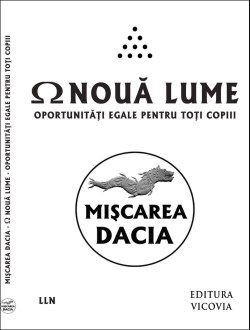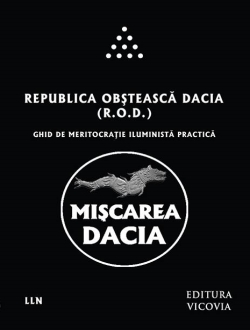Hyperian History Of The World (20th Century, Part 4)
Hyperian History Of The World (20th Century, Part 4)
The academic fracture of the 20th century also applied to the arts, particularly music. The romantic era of the 19th century drew to its end at the beginning of the 20th century with the mighty symphonies of Gustav Mahler. Like Wagner before him, Mahler utilised huge orchestral forces and crafted symphonies of epic length and huge scope. The final part of his eighth symphony sets the text of the final scene of Goethe’s Faust to music resulting in an intensely dramatic experience. Finally, in his ninth symphony, Mahler composed one of the most deeply profound works in music history, the best reflection of Mahler’s own statement that, ‘a symphony must be like the world. It must contain everything.’
Mahler died in 1911, and at around that time, other composers had begun to do something strange. For centuries composers had made use of traditional diatonic harmony which had become the standard musical language. There is some evidence for the breakdown of traditional harmony in the symphonies of Mahler, and even further back in the operas of Wagner, yet this was nothing like what was to come. Rather than build on and develop the systems of the past, composers began to just completely create their own systems of harmony from scratch.
The most famous composer to invent a new system of harmony was Arnold Schoenberg. Schoenberg noticed that, in traditional diatonic harmony, certain notes (depending on which key one was in) were more privileged than others (out of the twelve in the scale). The main note of a key (known as the tonic) and the note a fifth above it (known as the dominant) were far more privileged than the others in the scale, and occurred more often in a piece of music. Schoenberg decided, for what ever reason, to create a new system of composition in which no note is more privileged than any other and each of the twelve notes has just as much chance of occurring than any of the others. Originally called twelve-tone composition, this system came to be known as serialism, and it produced very odd, unusual sounding music without any sense of harmony. It did, however prove very influential in the 20th century, inspiring composers to move away from traditional harmony and explore ever more unusual and avant-garde ideas.
However, most of this music alienates average audiences. Classical music in the 20th century became increasingly intellectual, often in an overly pretentious way. Perhaps this was the reason for the rise in the artistic merits of popular music in the 20th Century, with firstly Jazz and then Rock music becoming the music of choice for ordinary people.
As an intellectual endeavour, 20th century classical music has produced an incredible array of ingenious ideas. In a very short time music has progressed to a state where, literally, anything is possible. There are no rules anymore, a composer can literally do anything he or she wants (even as far as sitting and doing nothing) and it can be called music. But now, there is huge polarisation. Ordinary people dismiss this all as nonsense, “this is not music!” they say, they view it as overly intellectual, pretentious and even arrogant. But, the highbrow musical intellectuals, those ‘in the know’ dismiss the views of the ‘ignorant’ masses, and insist that they and they alone have what it takes to appreciate this art.
Armed with the right knowledge, and the right mindset, one can find appreciation in the bizarre soundscapes of Stockhausen, Boulez, Carter, Penderecki, Ligeti, etc. But, if one is being honest, something is lacking. This music doesn’t contain any of the magic, any of the majesty of a Beethoven symphony, a Wagner opera, a Mozart concerto or a Bach oratorio. Mozart and Beethoven certainly did not compose for a highbrow intellectual elite. They were men of the people and their music was for the people. Beethoven frankly despised the elite, and his music speaks regularly of a universal brotherhood. Perhaps, then, this is because his music was making use of a more ‘natural’ system of harmony. Once again, to understand this, we must go all the way back to Pythagoras.
Pythagoras realised the connection between mathematics and music. He noticed that musical notes that sounded pleasing together had simple mathematical relations. A bell exactly half the size of another bell gives a note exactly an octave higher and so forth. For Pythagoras, mathematics was the very basis of all existence, it was something that existed naturally and was discovered by humans, not invented by them. Therefore, pleasing musical sounds were ones most in line with this natural order. Musicians, when composing pleasing music, are simply tapping into the natural mathematics of the universe, and discovering the harmony therein, this universal harmony that Pythagoras called ‘The Music Of The Spheres’.
Over the centuries following this discovery, musical theory developed, and was always based on these fundamental elements found in nature. When a note is played by an instrument, it actually generates many notes at once. The primary note that is played generates other notes, or overtones, and these all combine to produce the final sound. The overtones are always based on the original note in the same mathematical way, therefore the fundamental note plus its overtones constitute what is known as the ‘Harmonic Series’.
Say the fundamental note has a frequency of 100 Hz. The first overtone will be a tone with frequency 200Hz. This being double the original tone (a ratio of 2:1), it will sound exactly an octave higher than the first tone (just as Pythagoras said). The second overtone will have a frequency of 300 Hz. This is not double the first overtone, so won’t be another octave higher, but it does relate to the first overtone with a ratio of 3:2, a ratio which Pythagoras had noted produces the interval we call a fifth. While not quite as harmonious as an octave, the fifth still sounds very pleasing, very harmonious. The next, third overtone has a frequency of 400Hz. This is double the frequency of the first overtone, so will sound exactly an octave higher than that tone (and therefore two octaves higher than the original). But it also relates to the second overtone with a ratio of 4:3. This produces the interval known as a fourth. Slightly less pleasing that the fifth, but still quite nice. As we continue on with the harmonic series we get more and more overtones that have more and more complex mathematical relations. The more complex the ratio, the less pleasing the interval. Pleasing, harmonious music is that which is based on the simpler ratios, the more harmonious intervals.
Why are there twelve notes in the conventional octave? Traditional, diatonic music is based, primarily on the relations between notes that are a fifth apart. Other than the octave (which is the same note but higher, or lower), the fifth is the first interval produced by the harmonic series. If we start with the lowest A on a piano and play the note a fifth up from it, we play E. Then, continuing to add fifths, we get B, F#, C#, G#, D# (or Eb), Bb, F, C, G, D and then back to A (the very highest A on the piano). By going up in fifths until we get back to A, we have passed through twelve different notes, and these are the twelve notes that make up the conventional chromatic scale.
These chromatics notes, when played side by side, can often sound jarring, due to the more complex mathematical relations between them. But when anchored by notes with more simple relations (octaves, fifths and fourths) we can attain a more pleasing harmony. This is what was discovered over time by musicians, and culminated in the glorious harmony of the Baroque era, which itself culminated in the harmonic genius of Johann Sebastian Bach. Bach was easily the most mathematical composer of all time, and he fully and completely established a harmony that was able to cleverly use chromaticism but maintained harmony by anchoring it all down with fifths and other more basic intervals. Bach’s harmony ushered in the glorious era of classical music giving us Mozart and Beethoven before the romantics reached dizzying artistic heights in the 19th century.
Then, as has been said, everything got weird. Bach’s diatonic harmony was based on natural mathematical relations. Composers were still, as per Pythagoras, tapping in to the natural order when they composed their music. But, into the 20th century, composers started to get too big for their boots, trying to establish their own systems of harmony, of composition that bore less relation to the natural mathematical order, and became something far more ‘man-made’.
Beethoven had been tapping in to the pre-existing realm of mathematical perfection when he composed, rather than constraining himself with an artificial, man-made system like Schoenberg and others were now doing. Interestingly, Schoenberg thought he was freeing himself from the ‘dogmatism’ of diatonic harmony, yet he had done this with one fundamental misunderstanding. He had failed to realise that traditional harmony is the way that it is because it all comes from the natural order of mathematics, the one that Pythagoras discovered 2,500 years ago.
Schoenberg’s ‘man-made’ system of composition is just like the man-made systems of logic which mathematical philosophers were attempting to formalise at the same time before Gödel’s incompleteness theorems destroyed the idea. Just as these mathematicians failed to understand that mathematics was the arche of existence, Schoenberg and many other 20th century composers failed to understand that traditional musical harmony was a direct subjective experience of true mathematics, the arche of existence.
Going back to music, we can see the connections here. Diatonic harmony is the music that derives from natural mathematics. 20th century composers abandoned this in favour of artificial, man-made systems. This music, though it produced its masterpieces, has simply run its course. All the radical ideas have been explored, everything has been done. When, in 1952, John Cage composed his infamous 4:33, in which the performer sits in silence and that’s it, the musical world should have known that this era of avant-garde experimentalism was over. With Cage this music reached an abominable terminal point.
Being based on natural mathematics, diatonic harmony is not constraining at all, in fact, it is the gateway to infinite possibilities, as opposed to much 20th century music, which ran its course quite quickly and now produces nothing but the same old pseudo-intellectual nonsense over and over again.
Yet there were still some composers who kept clear of these man-made systems. Igor Stravinsky did in fact abandon traditional harmony in his epic ballet ‘The Rite of Spring’, yet he didn’t constrain himself with a man-made system like Schoenberg, and the music of this ballet, although lacking traditional harmonic elegance, ends up sounding very ‘natural’, an almost archetypal expression of primordial humanity. The other great Russian composer of the 20th century was Dmitri Shostakovich, who continued the older traditions of musical forms such as symphonies and string quartets composed mostly with diatonic harmony, yet his music towers above most other 20th century classical music in artistic majesty, whilst chronicling much of the horror of 20th century history.
Other art forms suffered in similar ways in the 20th century, descending into the chaos of avant-garde experimentalism, perhaps in response to the horror of much of the world events of the time, but also due to the general fracture of humanity after centuries of irrationalism and old world power. As part of the Hyperian revolution, art must be returned to the people, reflecting the natural order of existence, the archetypes of the collective unconscious which all can relate to.
Just imagine Beethoven, profoundly deaf, yet still managing to compose the most wondrous music, some of the greatest artistic achievements of all time. Where did this music come from? How was Beethoven able to hear it? It came from the infinite content of his own mind, which, like the whole universe, is merely an expression of the natural, mathematical order, just as Pythagoras said 2,500 years ago.












